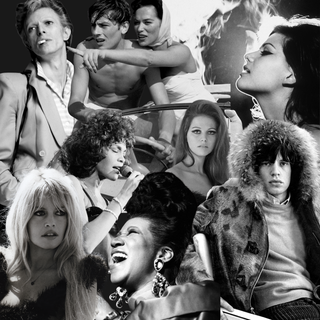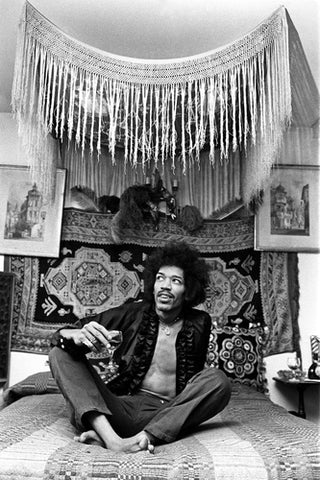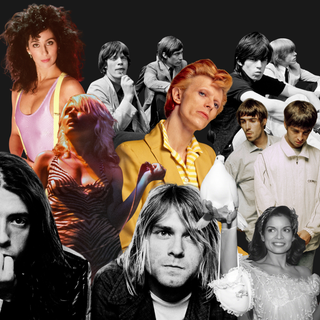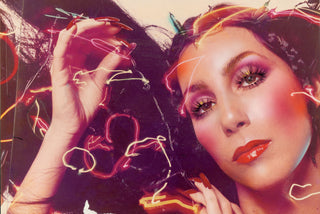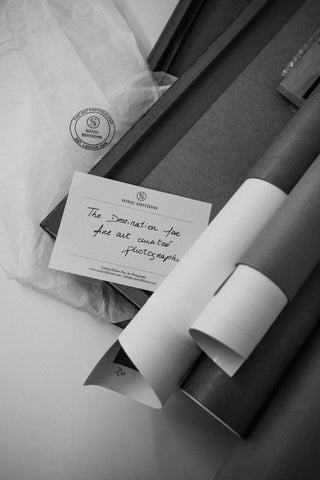Brian Aris

Brian Aris began his career as a photojournalist covering the civil unrest and riots at the start of the troubles in northern Ireland, the plight of Palestinian children in Kordan, the civil war in Lebanon, famine in Africa and the war in Vietnam. A complete change of direction saw him opening a studio where he started photographing fashion and glamour models for newspapers and magazines. Covering every aspect of the music scene from punk rock, glam’ rock and straight rock ‘n’ roll with the Rolling Stones right through to the emergence of the boy bands and then the girl power that arrived with The Spice Girls. His images of Mick Jagger were shown at the prestigious Recontres D’Arles exhibition in France and he has also recently had his first exhibition at the Royal Circle of Art in Barcelona. His archive represents one of the largest individual collections in the U.K.
Sonic Editions sat down with Brian Aris to hear more about shooting some of the biggest names in music, his process and what inspires him. Check out the full interview below...
SE: You began your career as a photojournalist, covering global conflicts from Northern Ireland to Vietnam before transitioning to studio work in London, what led to your shift eventually into music photography?
BA: I started out in photography as a photo journalist and never anticipated moving away from that genre. I had quite a few years covering The Troubles in Northern Ireland, Famine in Africa, Palestinian refugees in Jordan and of course a couple of trips to Vietnam. I left Saigon in 1975 two days before it was taken and the war ended. Back in London many of my photographs had been published and out of nowhere I began to get calls to do other work. Models and actors and some new pop stars so I decided to open a studio and try my hand at portraits. As soon as I did that I was asked to shoot The Jam, The Clash, Kate Bush and eventually at the end of the 70’s Debbie Harry. With all the new bands coming into fashion in London it was a great time to be involved and I never looked back.
SE: When did you know Photography was your passion?
BA: I was hopeless at art at school but really loved the subject. But I couldn’t draw or paint so my art teacher suggested I join the photography club. Once I began to learn how to develop film and print bromides I was totally hooked. I then read a book called Shoot First by a newsreel cameraman and that was the decision made. I would be a news photographer!
SE: Do you have a favourite camera to shoot with?
BA: I started on film with 35mm Nikons and then in the studio graduated to Hasseleblads. But when digital arrived I switched to Canon and have never changed. And since digital the Canons I own now have produced everything. I am not a great believer in owning lots of cameras. I probably have only owned a dozen cameras throughout my entire career. The person and the eye behind the camera is the important factor. Once you find a camera that feels comfortable in your hands what is the point of changing. The camera needs to be part of you and you shouldn’t have to think about it when shooting pictures.
SE: You have shot so many incredible musicians from the Rolling Stones right through to David Bowie and George Michael who has been your favourite to shoot so far and why?
BA: Favourites are very difficult to choose when you have been lucky enough to shoot the great artists I have. So I wouldn’t pick one. Every artist is unique and have such individual qualities. Of course it was privilege to work with David Bowie and George Michael for many years. But equally I began with Debbie Harry and my sessions with her and Blondie changed my thinking about photography. Debbie is right up there for me. But I loved working and travelling with Bob Geldof and being involved in Band Aid and Live Aid. And Sting who has been an amazing subject. I felt honoured to be asked to take official pictures of Her Majesty the Queen and those are sessions I will never forget. But looking through my archive and all the filing cabinets several are filled with images of a great friend and a wonderful talent who died much too young. I met Paula Yates when she was 17 and we worked together until her death. Paula really was a truly unique person and we produced many many images that I am really proud of. Such a sad loss.
SE: How do you build trust with your subject?
BA: I think trust is earned and begins with a sign I used to have on the studio door. It said “All egos are to be left outside the studio. Only the artist is allowed an ego today”. So being a total professional and having no sycophantic behaviour and most of all conversing with the person being photographed. Having your portrait taken can be intimidating and intrusive. The photographers job is to ease that tension and ensure everyone is relaxed and confident. And that includes the team. Hair dresser, make up artist, stylist, assistants. Everyone. Then it can be fun.
SE: What inspires you?
BA: I still feel the most honest photography is news reportage. And occasionally I feel a yearning to go back to my roots when I see great news pictures.
SE: You’ve had an amazing career as a photographer, what advice would you give to someone wanting to get into photography?
BA: I think getting into photography today is very tough. It always appears easy now because of the advent of digital. But all that means is that there is a feeling that its easy and anyone can do it. That means the competition is even greater and for a market if you speak about magazines and newspapers that is diminishing. So to make it through demands more dedication than ever. The simple truth is that the individual with an eye for composition who is inventive and ambitious and really dedicated will make it. But its important to be truthful to yourself and find out early if you have those qualities. Photoshop wont always save you.
SE: Are you following any other photographers at the moment?
BA: Still the same photographers. Don McCullin, Richard Avedon, Irving Penn, Bill Brandt, Cartier Bresson, Nick Knight and of course Annie Leibovitz.
SE: And finally, out of all your photos in your Sonic Editions Gallery, which one is your favourite and why?
BA: Again picking favourites is impossible. But currently I am very fond of the image of Mick Jagger taken in the USA in 1982. The pose, mood and cowboy boots do it for me. But it could also be Debbie Harry, Bowie, George Michael, Kate Bush...
Head to Brian Aris' Gallery to find more iconic images!

